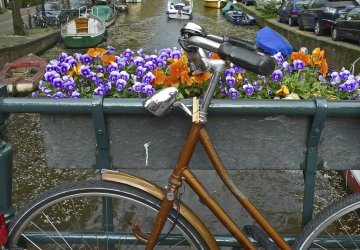
Using sensors is a much discussed topic in the field of Facility Management. Sensors provide organisations with information on buildings or assets, and they enable areas such as maintenance to be executed far more efficiently. What you perhaps don’t know is that sensors are used extensively in large Dutch bicycle parking facilities, and in other places too. However, acquiring sensors is actually akin to acquiring a dog: great to buy, but without sufficient attention and care, the pleasure quickly diminishes.
Where do we leave all these bicycles?
Of course the Netherlands is a premier cycling nation. Last year the cycling craze peaked in the Netherlands: some 22.5 million bikes were on the road, producing an average of 1.3 bikes per Dutch resident. According to Statistics Netherlands (CBS), an average of 900 kilometres is travelled per bike, mainly for school, work and to the railway station. Upon arrival at the destination, all these bikes have to be parked of course.
At railway stations in particular, we find, sometimes gigantic, cycle parking facilities. Currently, for example, there are 10,000 places for parking your bike at Amsterdam Central Station, a number to be doubled in the years ahead. Last year Utrecht saw the introduction of a completely new ‘bicycle park’ at its station, with space for 4,200 bikes. So it should be obvious: major cities are doing all they can to meet the huge demand for bicycle parking. However, this creates a new problem. As how do you know where there’s space, when you arrive on your bike at one of these huge facilities?
Finding your bike again with the help of a sensor
This is where sensors come in. Imagine: you equip each place where a bike can be parked with a sensor, which indicates whether that place is occupied. This information is forwarded to information boards at the entrance to the facility, letting the user know exactly which part or which floor of the facility has space available for parking. This system is already in operation in Utrecht and in other places. As a result of the information these sensors collect, there are no unnecessary blockages, cycle movements and frustrations.
It doesn’t stop there. What many people tend to forget is that sensors need regular maintenance. If they become dirty or damaged, for example, because a bicycle bumps into them, they could deliver unreliable signals. A sensor can certainly indicate whether a space is occupied, but not whether the sensor is dirty or damaged. This could cause the information boards to indicate that the facility is full, even though plenty of spaces are still available.
So that brings me back to my earlier example. Buying a dog is great, but your responsibility doesn’t stop there. You also have to let the dog out and care for it. If you don’t, you end up with an unhappy dog, and that wasn’t the idea when you bought him. The same applies to sensors. Introducing them yields many benefits, but they only work for managing a bike park, for example, if you also set up a regime for maintaining it. If that doesn’t happen, a pile of money has been invested in a system that will not keep working. No matter how useful this technology might be, for the longer term maintenance is a must.






















